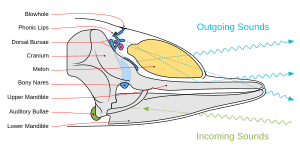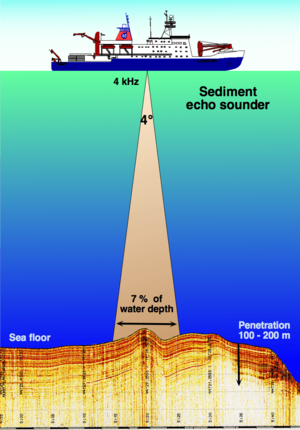Echo facts for kids
An echo happens when a sound bounces off something and comes back to you. It's like a sound wave hitting a wall and reflecting, just like a ball bouncing back. You hear the original sound, and then a little later, you hear its reflection. This reflected sound is the echo.
You might hear an echo in a big, empty room or when you shout towards a mountain. The time it takes for the echo to return depends on how far away the object is. The farther away it is, the longer the delay will be.
Contents
Where Does the Word "Echo" Come From?
The word "echo" comes from ancient Greek. It comes from "ēchō," which means "sound."
In old Greek stories, there was a mountain nymph named Echo. She was cursed and could only repeat the last words someone else said. This myth helps us understand why we call a reflected sound an "echo."
Animals and Echoes: Echolocation
Did you know some animals use echoes to "see" their surroundings? This amazing ability is called echolocation.
Animals like dolphins, whales, and bats send out sounds. They then listen for the echoes that bounce back from objects around them. By listening carefully, they can figure out where things are, how far away they are, and even what they are made of. This helps them find food and navigate in the dark or murky water.
How Sound Creates Echoes
Sound travels in waves. When these sound waves hit a hard surface, like a wall or a mountain, they bounce back. This bouncing back is called reflection.
For you to hear an echo clearly, the reflected sound needs to be strong enough. It also needs to arrive a little bit later than the original sound. If many sounds bounce around in a space, it's called reverberation. This is like a continuous mix of echoes.
Our ears can tell an echo apart from the original sound if it takes at least 0.1 seconds (one-tenth of a second) to come back. Sound travels very fast! In dry air, sound moves at about 341 meters per second (about 760 miles per hour).
So, for you to hear your own echo, the object reflecting the sound must be at least 17.2 meters (about 56 feet) away from you. If you hear an echo two seconds after you make a sound, the object is about 343 meters (about 1,125 feet) away. Places like canyons or cliffs are great for hearing natural echoes.
Amazing Uses of Echoes
Echoes are not just cool to hear; they have many important uses in our world!
Echoes in the Ocean: Sonar
One important use is in sonar technology. Sonar uses sound waves to find objects underwater. Ships send out special sound waves called ultrasonic waves. These waves are too high-pitched for humans to hear.
These ultrasonic waves travel through the water until they hit something, like an iceberg or the bottom of the sea. Then, they bounce back to the ship. By measuring how long it takes for the echo to return, scientists can figure out how far away the object is. This is how ships find the depth of the sea, a process called echo depth sounding.
Echoes in Medicine
Echoes are also very useful in the medical field. Doctors use ultrasonic waves to create pictures inside the human body.
- Ultrasonography uses echoes to see organs like the liver or kidneys. It can also show babies developing inside the womb.
- Echocardiography uses echoes to create moving pictures of the heart. This helps doctors check how well the heart is working.
Echoes in Music
Echo effects have been used in music since the 1950s. Musicians and recording artists use them to make sounds richer and more interesting.
One famous early device was the Echoplex, made in 1959. It used magnetic tape to create the sound of an echo. Many famous guitar players in the 1960s used the Echoplex. Today, most echo effects are made using electronic or digital technology.
See also
 In Spanish: Eco para niños
In Spanish: Eco para niños



